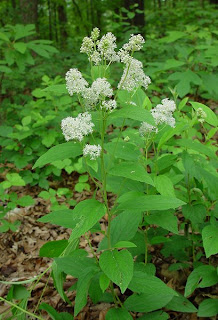LAVENDER

Latin Name: Lavendula angustifolia
Family: LAMIACEAE
Parts Used: Flowers, Leaves.
Properties: Analgesic, Antibacterial, Antidepressant, Antifungal, Antiseptic, Antispasmodic, Aromatic, Carminative, Cholagogue, Digestive Tonic, Diuretic, Nervine, Rubefacient, Sedative, Stimulant, Stomach Tonic, Tonic.
Internal Uses: Asthma, Colic, Cough, Depression, Exhaustion, Fainting, Flatulence, Headache, Insomnia, Nausea, Nervousness, Pain, Stress, Sunburn, Vertigo, Vomiting
Internal Applications: Tea, Tincture, Capsules.
Lavender exhibits activity against diptheria, typhoid, pneumonia, staph, strep and many flu viruses. Lavender is a good nerve restorative and also useful as an antibacterial agent.
Lavender exhibits activity against diptheria, typhoid, pneumonia, staph, strep and many flu viruses. Lavender is a good nerve restorative and also useful as an antibacterial agent.
Topical Uses: Acne, Burns, Cellulite, Cold Sores, Eczema, Edema, Fatigue, Halitosis, Headache, Infection, Insect Bites, Insect Repellent, Insect Stings, Irritability, Joint Pain, Lice, Muscle Soreness, Rheumatism, Scabies, Scars, Snakebites, Toothache, Yeast Infection
Topical Applications: Use as a mouthwash for bad breath, foot bath for fatigue, and douche for yeast infections. Essential oil is used for toothaches, cold sores, acne and sore joints. It can be rubbed on the temples to alleviate a headache. Undiluted, it is an excellent remedy to apply to burns to promote healing, prevent infection and lessen scarring. Essential oil or fresh plant can be rubbed on the body as a bug repellent. It can prevent not only mosquito bites, but also lice and scabies infestation. Essential oil can be used topically on venomous bites such as bee stings, mosquitos, black widow and brown recluse spiders, wasps and snakes.
Place a drop of Lavender essential oil on the edge of the mattress of a teething baby to calm him/her down. Soaps, sachets and bath herbs can be used for cranky children or even for adults who have had a bad day. Use Lavender as a rinse for fragrant hair, and use it in massage oil for sore muscles, edema, rheumatism and cellulite. Use as a salve for eczema. Often used as perfume.
Place a drop of Lavender essential oil on the edge of the mattress of a teething baby to calm him/her down. Soaps, sachets and bath herbs can be used for cranky children or even for adults who have had a bad day. Use Lavender as a rinse for fragrant hair, and use it in massage oil for sore muscles, edema, rheumatism and cellulite. Use as a salve for eczema. Often used as perfume.
Culinary uses: Lavender is added in small amounts to stews and soups in French cooking. An ingredient in Herbes de Provence. Add small amounts in salads, fruit dishes and breads. One can make Lavender sorbet and Lavender shortbread. Also, use in vinegars, jams and candies.
Energetics: Bitter, Cool, Dry.
Chemical Constituents: Essential oil (linalol, eucalyptol, geraniol, limonene, cineole), tannins, coumarins, flavonoids, triterpenoids.
Comments: The name Lavender is derived from the Latin lavare, meaning 'to wash', as it was added to baths for its therapeutic properties and delightful fragrance.
Before World War II, Lavender was used as an antiseptic dressing for wounds and as a method to get rid of parasites. In the days when corsets were the fashion, ladies would tuck some Lavender oil in a bottle around their necks to revive them when they were feeling faint. Lavender was a popular strewing herb in the Middle Ages and used as an ingredient in sachets to repel moths and other bugs from stored clothing. It was burned in sick rooms during the Bubonic Plague so as to prevent the spread of the disease. It was also used to scent leather.
The smell of Lavender helps to lift the spirits. It is a helpful fragrance to have present at birth, since it calms the mother. Likewise, at death it helps calm the one about to depart, as well as the departed's loved ones.
The common name Lavender also includes Lavendula viridis, Lavendula vera, Lavendula officinalis, as well as other Lavendula species, which are used interchangeably with Lavendula bangustifolia.
Before World War II, Lavender was used as an antiseptic dressing for wounds and as a method to get rid of parasites. In the days when corsets were the fashion, ladies would tuck some Lavender oil in a bottle around their necks to revive them when they were feeling faint. Lavender was a popular strewing herb in the Middle Ages and used as an ingredient in sachets to repel moths and other bugs from stored clothing. It was burned in sick rooms during the Bubonic Plague so as to prevent the spread of the disease. It was also used to scent leather.
The smell of Lavender helps to lift the spirits. It is a helpful fragrance to have present at birth, since it calms the mother. Likewise, at death it helps calm the one about to depart, as well as the departed's loved ones.
The common name Lavender also includes Lavendula viridis, Lavendula vera, Lavendula officinalis, as well as other Lavendula species, which are used interchangeably with Lavendula bangustifolia.

